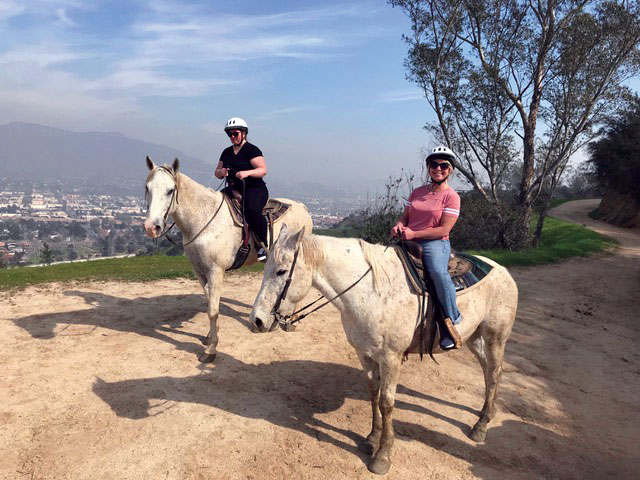Special to the Horsetrader

LOS ANGELES—When the Los Angeles Recreation and Parks Department recently wanted a horse person’s perspective on a Los Angeles Zoo expansion plan in Griffith Park, it turned to a familiar voice—Lynn Brown.
Brown’s resume reads like a Who’s Who in equestrian advocacy, having served as National Trail Coordinator for Equestrian Trails, Inc. for 20 years and more recently as a 10-year Vice President of the L.A. Equine Advisory Committee. If you aren’t familiar with the LAEAC but you are a civic-minded equestrian, you might become familiar with it. It’s a model for effective representation in City Hall for horsepeople, created by L.A. City Council in 2009. It was a historic first, as equestrians had never had an official voice to the city. Each city councilperson appoints one member to sit on the LAEAC, which reports directly back to council on the issues.
The zoo’s expansion is in an early stage, the perfect time for the Rec and Parks Department to call in Brown to represent equestrian trail concerns over the L.A. Zoo’s development plans. The interview was part of the project’s “Notice of Preparation” (NOP) with the Bureau of Engineering, Environmental Management Group. The Zoo’s NOP was the first step in a thorough environmental impact report.
“It is a professional project, with strict guidelines to the process, and the NOP committee were friendly and took notes about what I presented,” said Brown, who spoke for two hours on behalf of the LAEAC with some remarkable numbers: an estimated 50,000 annual visits to the Griffith Park trails by hikers and a minimum of 6,000 horses.
In the heart of Los Angeles, the 4,310-acre Griffith Park sits at the eastern end of the Santa Monica Mountains, the largest urban park in North America with about 54 miles of equestrian and hiking trails.
“You can ride all day without duplicating available trails,” Brown said.
These trails, though, were not all clearly marked on maps used in the NOP process. The maps also did not show current recreational facilities outside the Zoo’s footprint. This alarmed Brown. So did the engineers’ unfamiliarity with horses.
“People who interviewed me had no knowledge of trails, trail access or how horses react to fright—and especially to predators nearby,” said Brown. “The engineers seemed surprised at this. They had no idea that as a prey animal, horses are hard-wired in their brains and instincts to escape a predator any means possible—spinning and bolting at top speed to get away quickly, bucking. rearing, generally with no regard to their human riders. “
When she explained this to the Zoo and the engineers, they all nodded as if they understood.

“My information was that the lions, tigers, elephants and bears would not be moved out of the Zoo habitat canyon where their presence does not disturb the equestrian trail users,” she said. “Currently, there is no problem with large predators—by sight, smell or noise There can be nervous attention with some horses as the monkeys start hooting about 10 a.m., but that isn’t usually dangerous for riders.”
There were concerns, though, for the long-established, well-used equestrian trails bordering the Zoo. Since some of these trails also directly abut the Zoo property line, any new construction with heavy machinery would make the trail hazardous and unsafe, she said. Other concerns about construction impact (water run-off, erosion, effects on native plants and wildlife), surfaced, as well as concerns from increased vehicular traffic—especially at horse crossings.
Brown was surprised near the end of her interview when she learned the Zoo planned to develop facilities next to heavily-used trails and have lions and tigers close in the area.
“I objected to placing predators near horse trails,” she said. “ Their answer was that they could build a wall. I responded that a wall won’t work, as horses can still smell the lions and tigers—and hear them roar, which would cause dangerous run-aways, getting people and horses hurt or even killed.”
Brown said such development would make popular equestrian trails unusable to the equestrian public, and it could also have negative effects on the neighboring trails. Entire sections of the now popular, safe park would be abandoned by the public, she said.
The Zoo planning process is under way now, and reportedly will continue for 20 years. This fall, announcements for public meetings and comments on the Zoo Vision Plan will be held.
Leave a Comment
All fields must be filled in to leave a message.